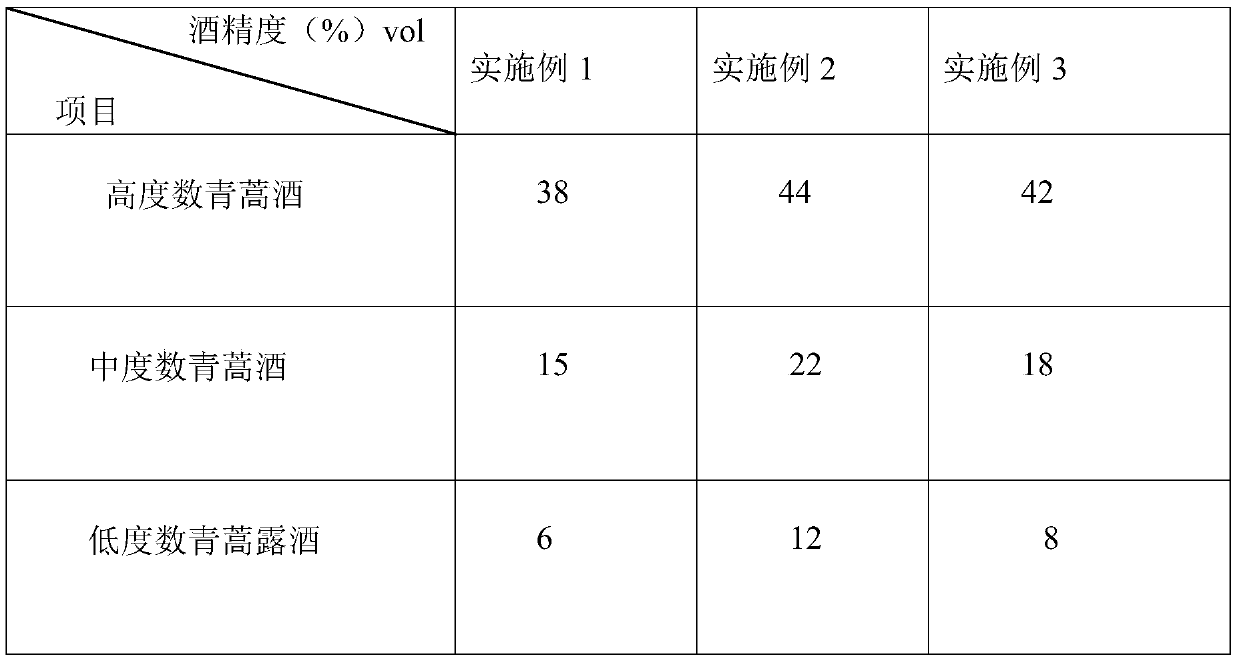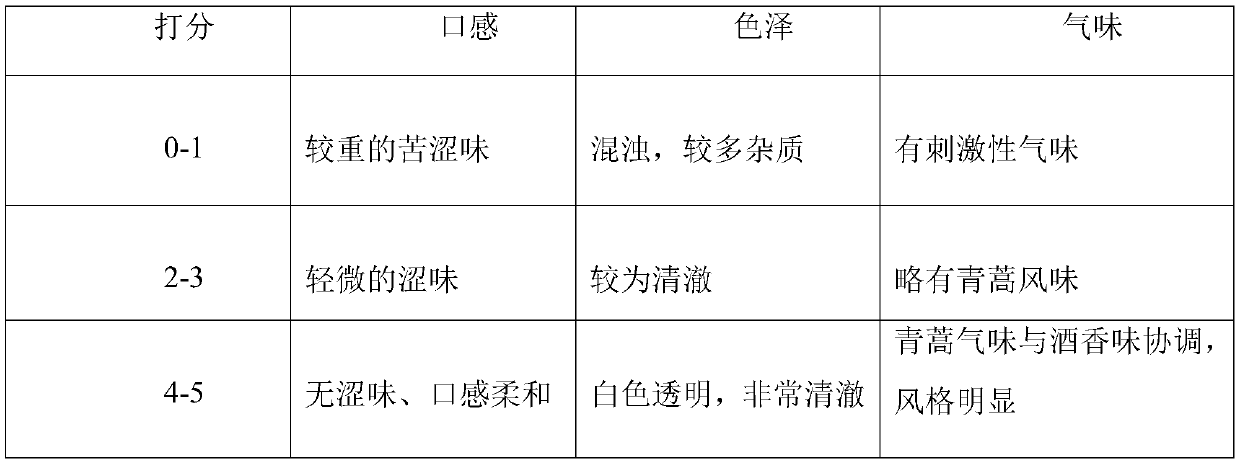Method for producing artemisia apiacea wine based on low-pressure distillation method
A distillation method, the technology of artemisia annua wine, applied in the field of wine making, to achieve the effect of low efficiency, high purity and good taste
- Summary
- Abstract
- Description
- Claims
- Application Information
AI Technical Summary
Problems solved by technology
Method used
Image
Examples
Embodiment 1
[0031] (1) Weigh 100kg of Artemisia annua, 8kg of barley, 24kg of glutinous rice and 3.5kg of yeast; soak the barley in water to grow malt, and the length of the malt is 3-5cm; steam the glutinous rice in water to obtain cooked glutinous rice, and then mix the malt with cooked The glutinous rice is beaten and mixed, diluted with an appropriate amount of pure water, and the residue is filtered to obtain a mixed solution; then fermented at a temperature of 30°C for 2.5 hours, and bubbles are generated on the surface of the mixed solution; then filtered, and the filtrate is passed through Cook to boil, then use slow fire to maintain the temperature at 85°C, then continue cooking until the filtrate is silky, stop heating, and obtain maltose syrup;
[0032] (2) Select fresh Artemisia annua, wash and sterilize at low temperature, then mash it, add the maltose syrup obtained in step (1), and then add the yeast, mix well and carry out fermentation. The fermentation temperature is 30°C ...
Embodiment 2
[0036] (1) Weigh 100kg of Artemisia annua, 13kg of barley, 35kg of glutinous rice and 7kg of yeast; soak the barley in water to grow malt, and the length of the malt is 3-5cm; The rice is beaten and stirred, diluted with pure water 45 times the mass of barley before soaking, and the residue is filtered to obtain a mixed solution; then fermented at 30°C for 5 hours; bubbles appear on the surface of the mixed solution; then filtered , the filtrate is boiled and boiled, and then the temperature is maintained at 80°C with a slow fire, and then the cooking is continued until the filtrate is silky, and the heating is stopped to obtain maltose syrup;
[0037] (2) Select fresh Artemisia annua, wash and sterilize at low temperature, then mash it, add the maltose syrup obtained in step (1), and then add the yeast, mix well and carry out fermentation. The fermentation temperature is 28°C, and the time is It is 22 days; fermented liquid is obtained after the fermentation is completed; the...
Embodiment 3
[0041](1) Weigh 100 kg of Artemisia annua, 10 kg of barley, 22 kg of glutinous rice and 4 kg of yeast; soak the barley in water to grow malt, and the length of the malt is 3-5 cm; steam the glutinous rice in water to obtain cooked glutinous rice, then mix the malt and cooked glutinous rice Mix and stir the rice, add an appropriate amount of pure water to dilute, filter off the residue, and obtain a mixed solution; then ferment at a temperature of 32°C for 3 hours; bubbles are generated on the surface of the mixed solution; then filter, and the filtrate is boiled after steaming , and then use a slow fire to maintain the temperature at 90°C and continue cooking until the filtrate is silky, stop heating, and obtain maltose syrup;
[0042] (2) Select fresh Artemisia annua, wash and sterilize at low temperature, then mash it, add the maltose syrup obtained in step (1), and then add the yeast, mix well and carry out fermentation. The fermentation temperature is 28°C, and the time is ...
PUM
| Property | Measurement | Unit |
|---|---|---|
| length | aaaaa | aaaaa |
Abstract
Description
Claims
Application Information
 Login to View More
Login to View More - R&D
- Intellectual Property
- Life Sciences
- Materials
- Tech Scout
- Unparalleled Data Quality
- Higher Quality Content
- 60% Fewer Hallucinations
Browse by: Latest US Patents, China's latest patents, Technical Efficacy Thesaurus, Application Domain, Technology Topic, Popular Technical Reports.
© 2025 PatSnap. All rights reserved.Legal|Privacy policy|Modern Slavery Act Transparency Statement|Sitemap|About US| Contact US: help@patsnap.com


